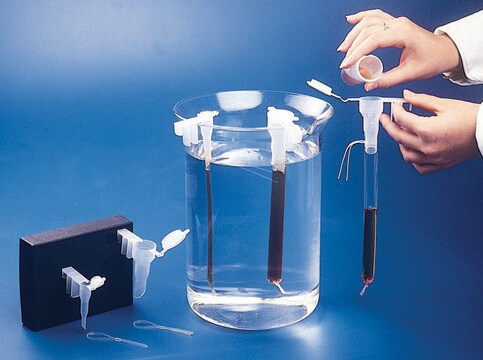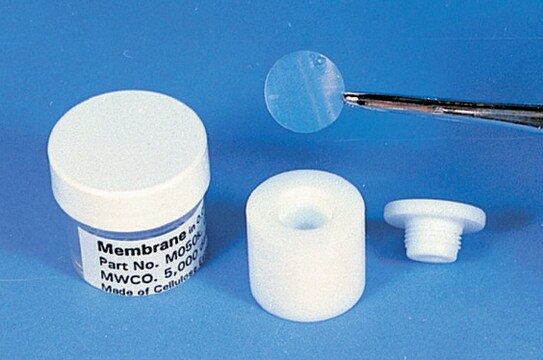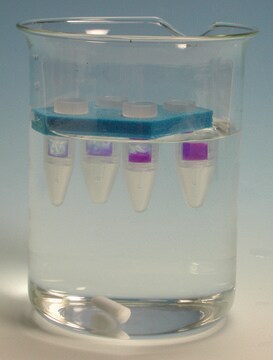D9277
Dialysis tubing cellulose membrane
avg. flat width 10 mm (0.4 in.)
Sign Into View Organizational & Contract Pricing
All Photos(1)
About This Item
UNSPSC Code:
41123100
NACRES:
NB.22
Recommended Products
avg. diam.
6 mm , when full
avg. flat width
10 mm (0.4 in.)
capacity
~10 mL/ft
Looking for similar products? Visit Product Comparison Guide
General description
Typical molecular weight cut-off = 14,000.
Packaging
Supplied in rolls, dry
Quality
May contain glycerin and sulfur compounds in more than trace amounts.
Preparation Note
Removal of glycerol included as a humectant can be accomplished by washing the tubing in running water for 3-4 hours. Removal of sulfur compounds can be accomplished by treating the tubing with a 0.3% (w/v) solution of sodium sulfide at 80°C for 1 minute. Wash with hot water (60°C) for 2 minutes, followed by acidification with a 0.2% (v/v) solution of sulfuric acid, then rinse with hot water to remove the acid. This tubing will retain most proteins of molecular weight 12,000 or greater.
Storage Class Code
11 - Combustible Solids
WGK
WGK 3
Flash Point(F)
Not applicable
Flash Point(C)
Not applicable
Certificates of Analysis (COA)
Search for Certificates of Analysis (COA) by entering the products Lot/Batch Number. Lot and Batch Numbers can be found on a product’s label following the words ‘Lot’ or ‘Batch’.
Already Own This Product?
Find documentation for the products that you have recently purchased in the Document Library.
Customers Also Viewed
Sunil Khatak et al.
Tuberculosis (Edinburgh, Scotland), 125, 102008-102008 (2020-10-16)
The present study aimed to formulate anti-tubercular drugs (Rifampicin, Isoniazid and Pyrazinamide) loaded solid lipid nanoparticles (ATDs-SLNs) using microemulsion technique for oral administration. Central composite designed (CCD) was applied to study the effect of stearic acid (X1), Compritol® 888 ATO
Protocols
Removal of Ethidium Bromide from DNA by Extraction with Organic Solvents Protocol from Cold Spring Harbor Laboratory Press.
Our team of scientists has experience in all areas of research including Life Science, Material Science, Chemical Synthesis, Chromatography, Analytical and many others.
Contact Technical Service



